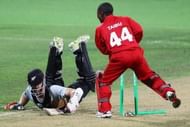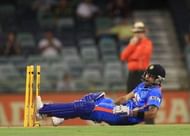We have had a series of ODI matches going around the world over the last couple of months and most of them have been played under the new ICC rules for ODI’s. The new rules came into effect with the India vs England series in October. Some of the important changes constituted – playing with 2 new balls from each end, Power plays (both batting and bowling) to be compulsorily taken between overs 15-40 and no substitute runner allowed for any batsman (this applies to all forms of the game).
From the day of inception of these new rules, spectators, fans, players and commentators have been looking at the changes with great anticipation and anxiety. To be fair, the ICC must be commended for this initiative as most of the changed playing conditions were designed to make the game more interesting. As a result, we have had more than a few edge-of-the-seat thrillers and nerve tingling contests in the ODI’s lately. Suddenly, scores ranging between 230 to 260 have become defendable and we are no longer subjected to high-scoring, predictable and boring contests. It goes without saying that all that cricketers, fans and the experts crave is an even contest between bat and ball. The new rules have intensified that uncertainty element in the game; a team can now make a comeback at any given point of time in the match.
Let us have a detailed look at what exactly has changed and how it has impacted the game:
Using 2 new balls from each end: This is probably the most interesting change that the ICC has brought about in the ODI format. Cricketing pundits are still trying to figure out the exact impact of this change on the game. On closer analysis of this rule change, we can definitely say that it has created a situation where a bowler is provided an equal opportunity to prove his worth. The rule states that one ball can only be used for 25 overs in an innings, so the bowlers will have a ‘new-ish’ and harder ball to bowl with throughout the innings. This means that now the fielding side would have to put in extra effort to maintain the shine on two different balls, all the while simultaneously working on them to garner any chances of reverse swing in the end overs. In conditions like England, Australia and South Africa where the new ball does a bit more, the batsmen will have to be watchful as they would have to counter swing, pace and bounce for a longer duration than before. However, in subcontinent conditions, considering the fact that the new ball doesn’t swing as much as it does in other parts of the world, this new rule could turn out to be a boon for the batsmen; they can hit through the line of the ball as it would travel faster.
Power Plays to be taken between overs 15-40: Before the power plays came into existence, the last 10 overs or the death / slog overs used to facilitate a lot of exciting contests between bat and ball. A bowler’s ability to constantly bowl in the block hole to avoid getting hit used to be severely tested during these overs. On the other hand, a batsman’s power, ability to run hard between the wickets and to manoeuvre the field were brought under the scanner too. That is why we all used to love watching close games involving players like Michael Bevan, Ajay Jadeja, Robin Singh and Lance Klusener in the 90’s.
A power play is a double-edged sword which can work both for you and against you, and hence makes the game more exciting. However, the earlier power play rule that allowed teams to use the power play at any time after the first 10 overs were complete took away some of the excitement from the game, since most batting side captains used to be extremely conservative and opt for the batting power play in the last 5 overs of the innings only. Likewise, the bowling captains used to opt for it from overs 11-15 in almost 90% of the games. This robbed the sport of the climax factor, especially in the second innings of a game where a close finish was expected. One always knew that the batting power play would be a huge factor towards the end, especially if a side had wickets in hand during the last 10 overs. Giving the option of taking that power play in the last 10 overs did not make much sense as it made life much easier for the team chasing to dominate in the end overs without taking much of a risk.
That is why, the new power play rule which prevents the power play from being taken in the last 10 overs, is a welcome change from the earlier rule. Thanks to the ICC, we now have that uncertainty element in the end overs of an innings back and the exciting phase of the game as seen in the 90′s is once again in place.
No Substitute runner allowed for a batsman: This rule applies to all 3 formats of the game. There could be varied opinions and interpretations of this rule by cricketing pundits. However, I believe this change could make the game more interesting. Earlier, the slightly unfit or weaker members of the batting fraternity used to opt for the easy option of going for a substitute runner. Without taking any names, a lot of batsmen, especially from the Asian Subcontinent, were able to score big hundreds with the help of a runner when their fitness levels were found wanting. While it is natural to get tired, dehydrate and lose concentration, this new rule will definitely propagate the ‘Survival of the Fittest’ theory.
The Virat Kohli run-out incident at Perth against Sri Lanka in the CB series game was one of the first instances where the batsman had to take a call to continue his innings and lose his wicket as a result of his cramp. While I agree that the single in question was highly improbable and he likely would not have made it even if he was fully fit, the sheer thought of not having the luxury of a runner must have been playing on his mind which might have led to that confusion in the middle.
Despite all these innovations in place, it may be a while before the game truly evolves, as any change takes a bit of time to sink in. However, it is hoped that One-Day Cricket will, in the future, provide an abundance of exciting contests, in the process regaining the popularity it has lost because of the prevalence of T20 cricket.
Looking for fast live cricket scores? Download CricRocket and get fast score updates, top-notch commentary in-depth match stats & much more! 🚀☄️



